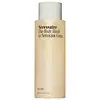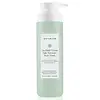What's inside
What's inside
 Key Ingredients
Key Ingredients

 Benefits
Benefits

 Concerns
Concerns

 Ingredients Side-by-side
Ingredients Side-by-side

Water
Skin ConditioningSodium Laurylglucosides Hydroxypropylsulfonate
CleansingCoco-Glucoside
CleansingDisodium Cocoamphodiacetate
CleansingGlycerin
HumectantSodium Methyl Cocoyl Taurate
CleansingSodium Chloride
MaskingSodium Hydroxide
BufferingLactic Acid
BufferingGlycolic Acid
BufferingMandelic Acid
AntimicrobialSalicylic Acid
MaskingGluconolactone
Skin ConditioningNiacinamide
SmoothingTocopherol
AntioxidantCaprylyl Glycol
EmollientSodium Benzoate
MaskingChamaecyparis Obtusa Wood Oil
MaskingPolygonum Cuspidatum Root Extract
AntioxidantParfum
MaskingChlorphenesin
AntimicrobialPhenoxyethanol
PreservativeAcrylates Crosspolymer-4
Emulsion StabilisingBenzyl Salicylate
PerfumingLinalool
PerfumingTetramethyl Acetyloctahydronaphthalenes
MaskingWater, Sodium Laurylglucosides Hydroxypropylsulfonate, Coco-Glucoside, Disodium Cocoamphodiacetate, Glycerin, Sodium Methyl Cocoyl Taurate, Sodium Chloride, Sodium Hydroxide, Lactic Acid, Glycolic Acid, Mandelic Acid, Salicylic Acid, Gluconolactone, Niacinamide, Tocopherol, Caprylyl Glycol, Sodium Benzoate, Chamaecyparis Obtusa Wood Oil, Polygonum Cuspidatum Root Extract, Parfum, Chlorphenesin, Phenoxyethanol, Acrylates Crosspolymer-4, Benzyl Salicylate, Linalool, Tetramethyl Acetyloctahydronaphthalenes
Water
Skin ConditioningSodium Cocoyl Methyl Isethionate
Sodium Cocoyl Isethionate
CleansingCocamidopropyl Hydroxysultaine
CleansingCocamidopropyl Betaine
CleansingGlycerin
HumectantCoco-Glucoside
CleansingPolyquaternium-73
Anthemis Nobilis Flower Oil
MaskingNiacinamide
SmoothingPanthenol
Skin ConditioningCamellia Sinensis Leaf Extract
AntimicrobialAscorbyl Glucoside
AntioxidantHippophae Rhamnoides Fruit/Seed Oil
AntimicrobialPyrus Malus Fruit Extract
Skin ConditioningPolyquaternium-10
Magnesium PCA
HumectantManganese PCA
HumectantZinc PCA
HumectantSodium PCA
HumectantSodium Lactate
BufferingPCA
HumectantSerine
MaskingAlanine
MaskingGlycine
BufferingGlutamic Acid
HumectantLysine Hcl
Skin ConditioningThreonine
Arginine
MaskingProline
Skin ConditioningLauryl Glucoside
CleansingTocopheryl Acetate
AntioxidantBetaine
HumectantCaprylyl Glycol
EmollientDidecyldimonium Chloride
EmulsifyingMethylpropanediol
SolventPolyquaternium-80
CleansingChamomilla Recutita Flower Extract
MaskingCitrus Aurantium Bergamia Fruit Extract
Skin ConditioningCitrus Limon Peel Extract
EmollientLavandula Angustifolia Flower/Leaf/Stem Extract
MaskingRosmarinus Officinalis Leaf Extract
AntimicrobialRubus Idaeus Fruit Extract
AstringentSalvia Officinalis Leaf Extract
CleansingVanilla Planifolia Fruit Extract
Skin ConditioningDecyl Glucoside
CleansingTetrasodium Glutamate Diacetate
Citric Acid
BufferingWater, Sodium Cocoyl Methyl Isethionate, Sodium Cocoyl Isethionate, Cocamidopropyl Hydroxysultaine, Cocamidopropyl Betaine, Glycerin, Coco-Glucoside, Polyquaternium-73, Anthemis Nobilis Flower Oil, Niacinamide, Panthenol, Camellia Sinensis Leaf Extract, Ascorbyl Glucoside, Hippophae Rhamnoides Fruit/Seed Oil, Pyrus Malus Fruit Extract, Polyquaternium-10, Magnesium PCA, Manganese PCA, Zinc PCA, Sodium PCA, Sodium Lactate, PCA, Serine, Alanine, Glycine, Glutamic Acid, Lysine Hcl, Threonine, Arginine, Proline, Lauryl Glucoside, Tocopheryl Acetate, Betaine, Caprylyl Glycol, Didecyldimonium Chloride, Methylpropanediol, Polyquaternium-80, Chamomilla Recutita Flower Extract, Citrus Aurantium Bergamia Fruit Extract, Citrus Limon Peel Extract, Lavandula Angustifolia Flower/Leaf/Stem Extract, Rosmarinus Officinalis Leaf Extract, Rubus Idaeus Fruit Extract, Salvia Officinalis Leaf Extract, Vanilla Planifolia Fruit Extract, Decyl Glucoside, Tetrasodium Glutamate Diacetate, Citric Acid
 Reviews
Reviews

Ingredients Explained
These ingredients are found in both products.
Ingredients higher up in an ingredient list are typically present in a larger amount.
Caprylyl Glycol is a humectant and emollient, meaning it attracts and preserves moisture.
It is a common ingredient in many products, especially those designed to hydrate skin. The primary benefits are retaining moisture, skin softening, and promoting a healthy skin barrier.
Though Caprylyl Glycol is an alcohol derived from fatty acids, it is not the kind that can dry out skin.
This ingredient is also used as a preservative to extend the life of products. It has slight antimicrobial properties.
Learn more about Caprylyl GlycolCoco-Glucoside is a surfactant, or a cleansing ingredient. It is made from glucose and coconut oil.
Surfactants help gather dirt, oil, and other pollutants from your skin to be rinsed away.
This ingredient is considered gentle and non-comedogenic. However, it may still be irritating for some.
Learn more about Coco-GlucosideGlycerin is already naturally found in your skin. It helps moisturize and protect your skin.
A study from 2016 found glycerin to be more effective as a humectant than AHAs and hyaluronic acid.
As a humectant, it helps the skin stay hydrated by pulling moisture to your skin. The low molecular weight of glycerin allows it to pull moisture into the deeper layers of your skin.
Hydrated skin improves your skin barrier; Your skin barrier helps protect against irritants and bacteria.
Glycerin has also been found to have antimicrobial and antiviral properties. Due to these properties, glycerin is often used in wound and burn treatments.
In cosmetics, glycerin is usually derived from plants such as soybean or palm. However, it can also be sourced from animals, such as tallow or animal fat.
This ingredient is organic, colorless, odorless, and non-toxic.
Glycerin is the name for this ingredient in American English. British English uses Glycerol/Glycerine.
Learn more about GlycerinNiacinamide is a multitasking form of vitamin B3 that strengthens the skin barrier, reduces pores and dark spots, regulates oil, and improves signs of aging.
And the best part? It's gentle and well-tolerated by most skin types, including sensitive and reactive skin.
You might have heard of "niacin flush", or the reddening of skin that causes itchiness. Niacinamide has not been found to cause this.
In very rare cases, some individuals may not be able to tolerate niacinamide at all or experience an allergic reaction to it.
If you are experiencing flaking, irritation, and dryness with this ingredient, be sure to double check all your products as this ingredient can be found in all categories of skincare.
When incorporating niacinamide into your routine, look out for concentration amounts. Typically, 5% niacinamide provides benefits such as fading dark spots. However, if you have sensitive skin, it is better to begin with a smaller concentration.
When you apply niacinamide to your skin, your body converts it into nicotinamide adenine dinucleotide (NAD). NAD is an essential coenzyme that is already found in your cells as "fuel" and powers countless biological processes.
In your skin, NAD helps repair cell damage, produce new healthy cells, support collagen production, strengthen the skin barrier, and fight environmental stressors (like UV and pollution).
Our natural NAD levels start to decline with age, leading to slower skin repair, visible aging, and a weaker skin barrier. By providing your skin niacinamide, you're recharging your skin's NAD levels. This leads to stronger, healthier, and younger looking skin.
Another name for vitamin B3 is nicotinamide. This vitamin is water-soluble and our bodies don't store it. We obtain Vitamin B3 from either food or skincare. Meat, fish, wheat, yeast, and leafy greens contain vitamin B3.
The type of niacinamide used in skincare is synthetically created.
Learn more about NiacinamideWater. It's the most common cosmetic ingredient of all. You'll usually see it at the top of ingredient lists, meaning that it makes up the largest part of the product.
So why is it so popular? Water most often acts as a solvent - this means that it helps dissolve other ingredients into the formulation.
You'll also recognize water as that liquid we all need to stay alive. If you see this, drink a glass of water. Stay hydrated!
Learn more about Water